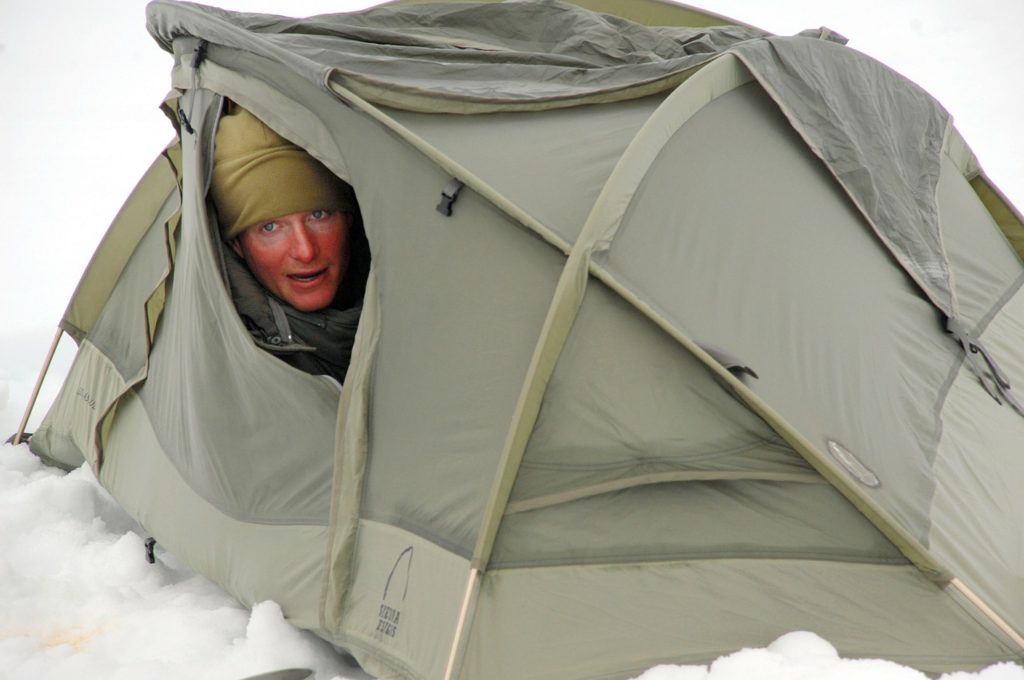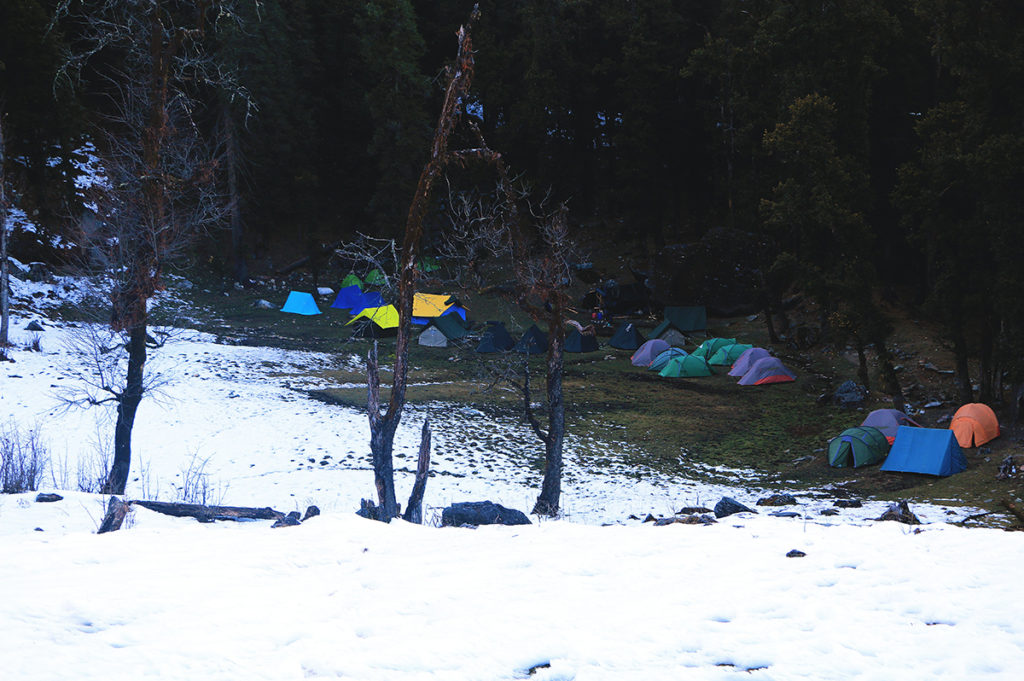Camping out in the cold months of winter requires that you take extra precautions to keep warm. However, you do not need to bring a car load of blankets to stay comfortable. What follows are a few tips that will help you understand how to insulate a tent for winter camping.
Take the Smallest Tent Possible
This may seem like the most obvious tip, but the smaller the tent, the easier it will be to keep warm. This is because the heat you generate will fill a smaller tent more efficiently compared to a larger one. Plus, it is considerably easier to insulate a smaller tent. Keep the bigger tent in storage for the summer months when you want the breeze to come through.
If you have no choice but to take a larger tent, then bring a stove with you to heat the interior. A wood stove will require a stovepipe and an opening in the tent to let out the smoke.
Check the Sides and Corners
Does your tent have a floor? If so, you not only have one layer of insulation, but you also have all the corners and sides covered to keep out the cold breeze. If the tent does not have a floor, then you will need to provide insulation for the ground, corners, and sides. To understand how to insulate a tent for winter camping, you must start with the basics.
Any holes in the tent will need to be addressed before you go on your trip. On top of that, any lessons you learned from your tent the last time you camped out in the cold should be considered as well.

Waterproofing
All the insulation in the world will not help if your tent leaks. Be sure that it is waterproof before starting your trip. You can check this by setting up the tent and running water over it while looking for any leaks. If you do not have the space or time to set up your tent, then purchase a rain fly instead to put over your tent.
A rain fly will not only keep the water out, it will help insulate the tent at the top. The fly is easy to set up and acts as an extra layer of insulation. Plus, it helps protect the tent from damage caused by rain and even small hail.
Set Up Tent in a Protected Area
When choosing a location for your tent, the best place is one that offers protection from the icy winds. This means setting up your tent next to a natural windbreak such as shrubs, rock formations, or trees. This will help keep the wind from pulling away the heat being generated in the tent.
If there is no such windbreak available, tack down a tarp on the side of the tent where the wind strikes. This will provide an extra layer of protection which will deflect the wind away from the side of the tent. The key in how to insulate a tent for winter camping is to provide as much natural protection from the cold as possible.
Also Read: How to Keep a Log Cabin Warm in Winter?
Start the Insulation from the Ground Up
Remember that the cold will start at the ground level, so you’ll want to start the insulation process at that point. Bring with you a ground mat, rug, or blanket that can be placed on the ground or floor of the tent. Even if you are sleeping in a cot, having a rug or mat on the ground will help keep your feet comfortable if you should need to stand up and walk outside.
If you are sleeping on the ground, then a specialized sleeping mat is the perfect solution. You’ll want one that can inflate which puts some distance between you and the ground. This is a simple method of how to insulate a tent for winter camping.

Bring the Proper Gear
In addition to your tent, you will need the proper clothing and gear to keep warm. Remember that it is best to take a little too much protection rather than not enough. You should create a checklist that includes the following:
- Insulated Boots, Coat, Underwear, and Pants
- Several Pairs of Socks
- Proper Headgear that Covers the Ears
- Mat, Blankets, and Insulated Sleeping Bag
Bringing enough of the basics will help you stave off the cold winter conditions. Keep in mind that the more layers you wear, the better protected you are from the cold.
Bring Heat Packs
Heat packs are simple, inexpensive items that provide hours of warmth. You can put them in your pockets during the day to keep your hands warm. Then place them in your sleeping bag at night for a comfortable night’s rest. When they start to lose their heating ability, just shake them to reactivate the chemicals.
You should purchase smaller heat packs for your pockets and boots and larger ones for your sleeping bag. Remember that they will run out of heating ability at some point, so carry enough with you for the entire trip.
Extra Thermal Blanket & Duct Tape
If you find that what you bring is not quite enough to properly insulate the tent, then you can attach a thermal blanket to the top of your tent using duct tape. This will insulate the top of the tent and help trap the heat generated inside. This simple, yet effective method will help ensure that you sleep more comfortably at night.
Of course, duct tape should be part of your supplies as it can temporarily bond different items together when needed. Plus, you can use the extra thermal blanket as a windbreak or to place over your sleeping bag in case attaching it to the tent is not practical.
Wrapping Up
Now you know how to insulate a tent for winter camping, be sure to follow the basics and carry with you all the insulating gear needed to make your stay a comfortable one. Any changes you make in terms of providing new heat sources, insulation gear, or equipment need to be accounted for as well before you trek out into the winter countryside.
You May Also be Interested in Reading: What Temperature Should I Set My Thermostat in Winter?

